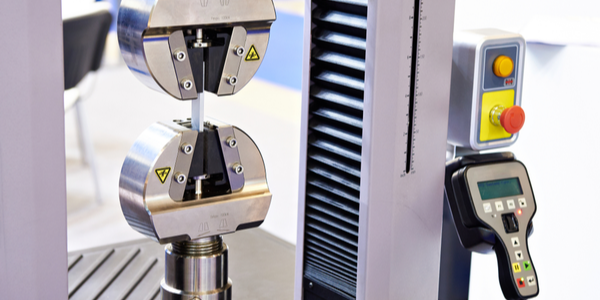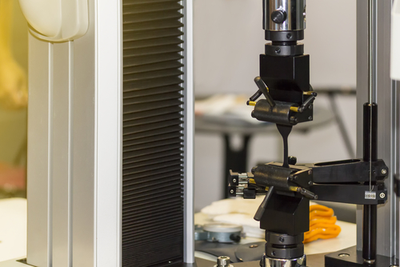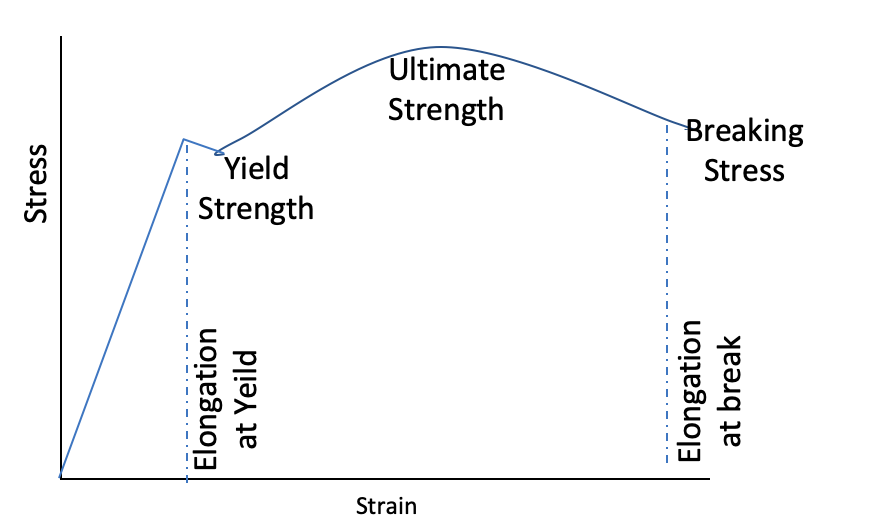
Tensile Testing is a common method of evaluating the physical properties of materials. It is a destructive test where an example is placed under controlled tension until failure point is reached.
Tensile testing can also be used to measure how much force can be applied before a product deforms (stretches) and ultimately breaks.
In this article, we’ll be exploring Tensile Testing; we’ll be asking
- What is Tensile testing
- Tensile Testing Process
- Equipment used for Tensile Testing
- Benefits of Tensile Testing
What is Tensile Testing
Tensile testing is a destructive mechanical testing method.
It is frequently used in material testing processes and is often used by the Quality function to determine and quantitively express the strength of materials used in parts and/or components.
Tensile testing usually quantifies a range of properties, including:
- Yield strength (the point at which deformation occurs)
- Tensile strength & Ultimate strength test
- Ductility
- elongation, and
- elastic modulus.
- Strain Hardening
It is typically measured as an expression of the amount of force required to pull a specimen to the point of material failure.
The force is usually expressed by either:
- PSI (Pounds per square inch)
- MPa (megapascals)
Tensile strength is an important feature to understand when comparing materials to determine which to use for specific applications.
Tensile Testing Process
Tensile testing is carried out using a number of inputs:
- A specimen of the material being tested (A specimen is usually prepared in lieu of the testing standard being utilized.)
- A tensometer (A device used to both hold the specimen and provide readings).

The tensometer holds the specimen, usually between two grips.
Force is then applied (pulling the two grips apart) until the specimen breaks.
Specimens used are typically cross-sections of the material formed, so that it is easy to be gripped by the tensile tester while facilitating a clear view of any deformation that occurs.
Various measurements are recorded.
- The force applied at the point of breaking is known as the ultimate tensile test or tensile strength.
- Elongation. Measuring the force applied that results in a change of length of the specimen. We express elongation by determining the original length (through measurement) and then working out the new length as a percentage. Ultimate Elongation is the length of the specimen at the point of breakage.
- Modulus (shown as pounds per square inch), which is the force being applied at a specific elongation value.
There are various standards that can be used when undertaking tensile testing. These include:
- ISO 527 (-1 to -5) Plastics
- ISO 6892 – Metallics
- ASTM D 638 – plastics
- ASTM D 3039 – polymers
- ASTM C 297– sandwich core materials
Equipment used for Tensile Testing

There is a large range of providers of tensile testing equipment. Equipment is usually available for specific industries, and there are various options open for customizing equipment adding appropriate grips and fixtures for specific materials.
Equipment could be single column, double column, or horizontal machines.
Most manufacturers focus on equipment that has characteristics that demonstrate
- Ease of use
- Accuracy
- Ability to measure a range of specimens
Benefits of Tensile Testing
There are several benefits of utilizing tensile testing.
- It’s a relatively simple tried and tested method.
- It helps us understand when materials might fail under tension (and thereby informs us when selecting different materials for use in our products)
- It helps us understand how parts may deform when under tension.
- It helps in calculating product aspects such as safety. (For example, consider a component in an aircraft that is designed to operate with a certain force applied to it. Tensile testing will help us understand the performance boundaries of the part under various forces.)
What is the Tensile Curve
A Tensile curve (sometimes referred to as a stress-strain curve) explains the relationship between stress and strain for a given component or material.
This relationship is determined through tensile testing.
This is an example of the Tensile Curve.

In we see parts function from M10 – M25 range. Parts are not operated higher up the curve as this is likely to result in more failures.
Why is Tensile Testing Performed?
As described above, Tensile testing demonstrates important properties relating to materials.
The results of testing can be used in:
- Helping to select appropriate materials
- Predicting how a component will behave under various forces being applied.
- Helping to understand if specifications have been met
- Supporting a quality assurance process
- Helping to contrast material types
Who carries out tensile testing?
Tensile testing can be carried out either in-house or subcontracted to specialist services that provide testing equipment and trained resources to undertake the testing.
Summary
Tensile testing is an important quality assurance process that can highlight potential flaws in materials or components that could prove, at worst, catastrophic if not caught.
Data obtained from testing material can be used in various processes.
There is a huge range of equipment and third-party providers that can help your organization in testing materials and providing quantitative results.
If you’re interested in how tensile testing can be applied in your organization, then we’d love for you to get in touch.
You can reach us via Twitter (https://www.twitter.com/QMSGurus) or via the comments section below.
